Between the empires
2000 years, 6 empires, kingdoms, republics and 3 Jewish ethnicities. History richer than any imagination.
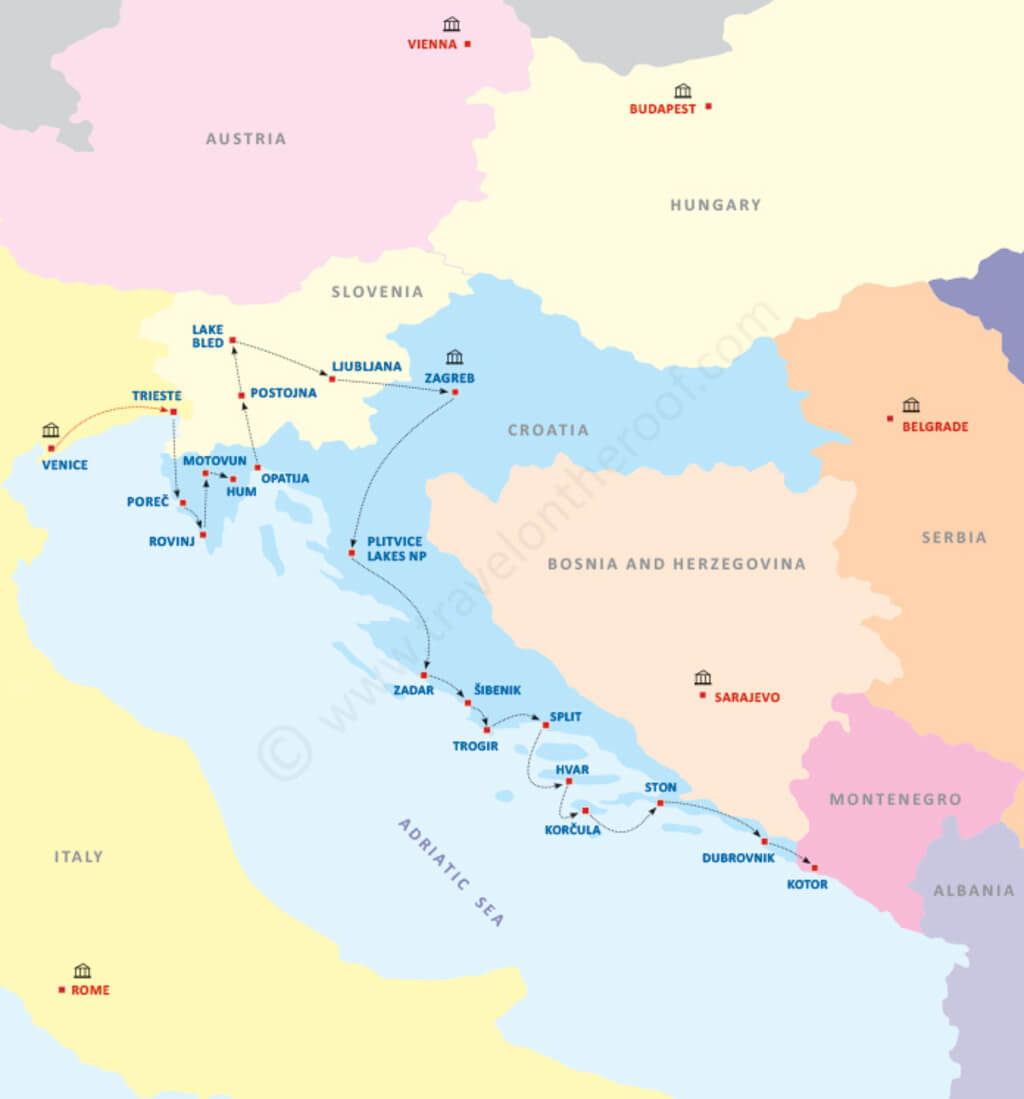
Full itinerary
For the past 2000 years this part of Europe has been a border area between numerous empires, kingdoms, republics, states and regions. Different cultures, identities, customs and traditions, have all created a space that vividly preserves their memory. Some ruled for centuries, some visited for a few decades, some were ruled by others over millenia – but all left their imprint – and it’s visible today. The Jewish history of the area shows us what happens when borders and spheres of influences continually change. Ashkenazi and Sephardic communities, present here for centuries, were not the first Jewish communities to dwell in the region. Discover the amazing history of European melting pot.
Day 1
Start the tour in Venice, and drive to Trieste, a former major Austria-Hungarian port, with rich and diverse Jewish history. Visit second largest synagogue in Europe, Jewish museum and a marvelous Miramare castle. Dinner with the local Jewish community.
Stay@: SAVOIA EXCELSIOR PALACE 4*; HOTEL VICTORIA 4*; HOTEL RIVIERA & MAXIMILIANS 4*; HOTEL CONTINENTALE 4*
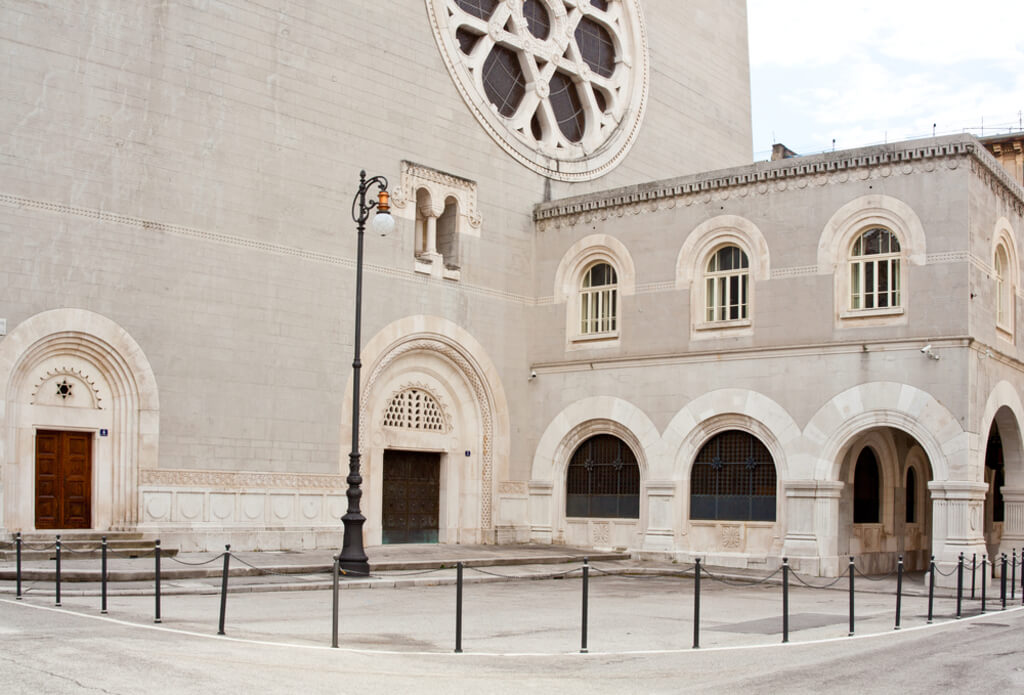
View of the Synagogue in Trieste, Italy
Day 2
Leave Trieste in the morning, making our way to Poreč, whose cobblestone streets still follow the original Roman architectural plan. Visit the magnificent 6th century Euphrasius Basilica, UNESCO World Heritage site. Continue to Rovinj, one of the most beautiful cities on the western Istrian coast. Claimed to be the most Italian of all Croatian towns, this former island, and today’s penninsula is inviting you to discover hidden treasures of its twisting little streets.
Stay@: MONTE MULINI 5*; DESIGN HOTEL LONE 5*; VILLA VALDIBORA 4*
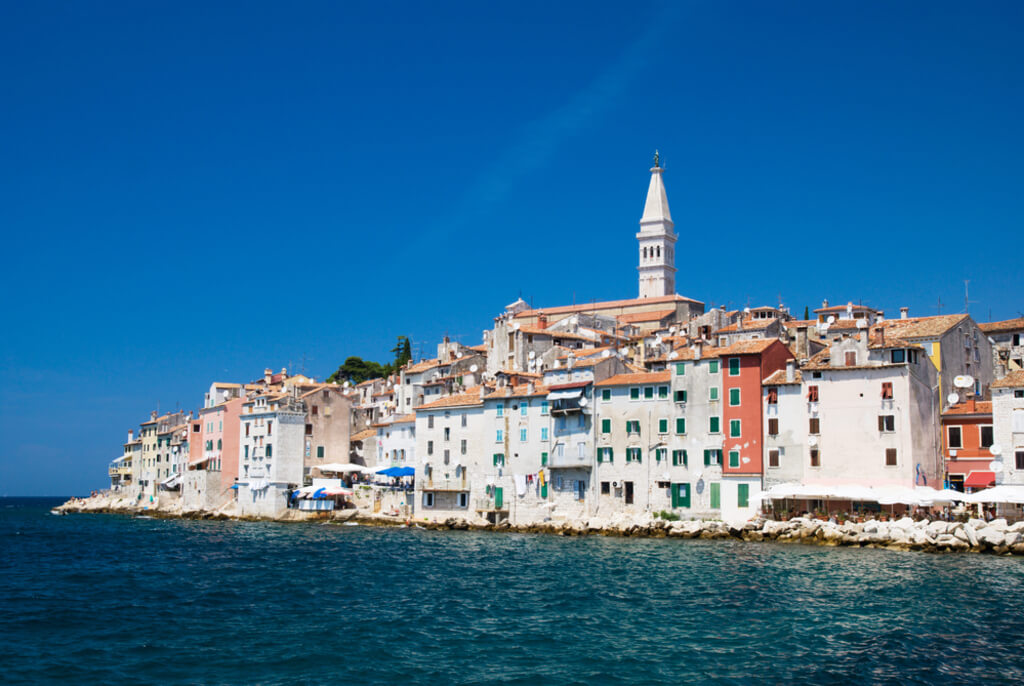
One of the most beautiful cities on the western Istrian coast. Also, claimed to be the most Italian of all Croatian towns, this former island, and today’s penninsula is inviting you to discover hidden treasures of it’s twisting little streets.
Day 3
Today we will enjoy some of the most romantic and pictroesque views in the area, driving through hill towns and vineyards of Istrian penninsula, seeing some of most hidden Croatian cultural treasures. The day ends in Opatija, also known as Croatia’s Nice, where kings and queens, and princesses and dukes once strolled along its magnificent 11 km seaside promenade, name after Franz Joseph I. Dinner in a nearby fisherman’s village tavern.
Stay@: HOTEL MILENIJ 5*; HOTEL MIRAMAR 4*
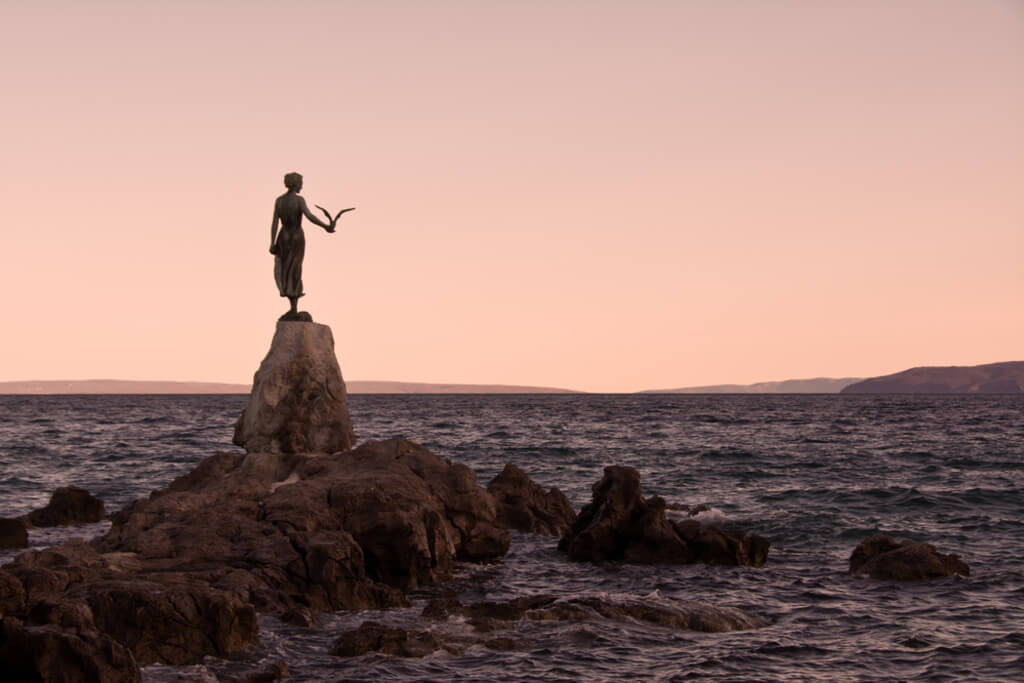
Maiden with the seagull, a statue by Zvonko Car (1956), one of symbols of Opatija.
Day 4
Cross the border to Slovenia, to visit the Postojna cave, the largest and most visited “carst” cave in Europe, for an unforgettable hour and a half experience, deep underground.
Continue to Lake Bled, a majestic glacier lake, glisttening under the Alps, for a perfect afternoon and evening, surrounded by snow covered mountains and some of most spectacular views in Slovenia.
Stay@: GRAND HOTEL TOPLICE 5*; HOTEL PARK 4*
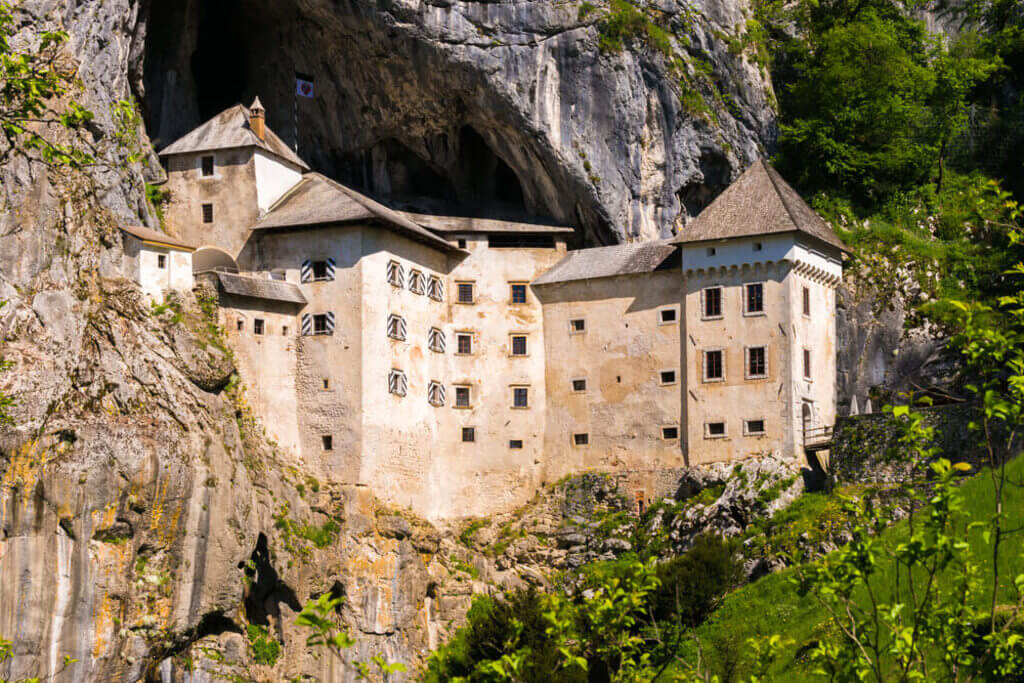
Magnificent and mysterious Predjama Castle, more than 800 years old. It is listed among the Guinness World Records as the largest cave castle in the world.
Day 5
Ljubljana is one of the most charming cities in Europe. The old city center, overlooked by an old castle, with the Ljubljanica river slowly flowing through it, offers its visitors abundance of architectural and cultural monuments and unique laid-back atmosphere. Street festivals, markets and numerous spoken languages give Ljubljana a truly cosmopolitan feel throughout the year. Cross the border, again, on the way to Croatian capital – Zagreb, with its rich and surprising Jewish history and enduring present.
Stay@: HOTEL ESPLANADE 5*; SHERATON HOTEL ZAGREB 5*; WESTIN ZAGREB 5*
Day 6
Plitvice lakes National park is a natural crown jewel of anyone’s travels through Croatia. 16 lakes, numerous waterfalls (how many will you count?), a pleasant walk along the lakes in the lush European forrest, endless photo-ops, local food on the road… On the way we will stop at the village of Rastoke, another Croatian hidden gem, with houses and watermills built above the rushing water. Continue to the old Adriatic port of Zadar, continuosly settled since pre-Roman times. Zadar is a place where Adriatic history and gushing present mix perfectly, where its historic penninsula hosts the famous, modern-day work of wonder The Sea Organ – a perfect background music for “the most beautifull sunset in the world”, as claimed by Alfred Hitchcock.
Stay@: ART HOTEL KALELARGA 4*; HOTEL BASTION 4*

The light instalation in Zadar you will never forget, made by architect Nikola Bašić.
Day 7
Driving along the Dalmatian coast, we visit Vransko jezero, a true beauty of nature, with a bird reservation and unmatched view of Dalmatian islands. The coastal town of Šibenik, with the most alluring example of renaissance architure in Croatia – St. James’ cathedral and further along the coast, Trogir; both places on the UNESCO‘s list of World Heritage sites. The day ends in Split, our favourite spot on the Croatian Adriatic. Tomorrow you will find out why.
Stay@: CORNARO HOTEL 4*; PIAZZA HERITAGE HOTEL 4*; HOTEL VESTIBUL PALACE 4*
Duration: 14 days
Price per person: TBA
14 days/13 nights
4* and 5* hotels
4 countries
6 World Heritage sites
A/C minivan or car with driver
English speaking driver/tour leader
4 countries: Italia, Slovenia, Croatia, Montenegro
Day 1 Venice overnight Trieste
Day 2 Trieste – Poreč – Rovinj o.n. Rovinj
Day 3 Motovun – Hum – Opatija on Opatija
Day 4 Postojna -Lake Bled on Lake Bled
Day 5 Ljubljana – Zagreb on Zagreb
Day 6 Plitvice Lakes – Zadar on Zadar
Day 7 Šibenik – Vransko – Trogir – Split on Split
Day 8 Split on Split
Day 9 Hvar Island on Hvar
Day 10 Korčula island on Korčula
Day 11 Pelješac peninsula – Ston – Dubrovnik on Dubrovnik
Day 12 Dubrovnik on Dubrovnik
Day 13 Kotor/Montenegro on Dubrovnik
Day 14 Departure
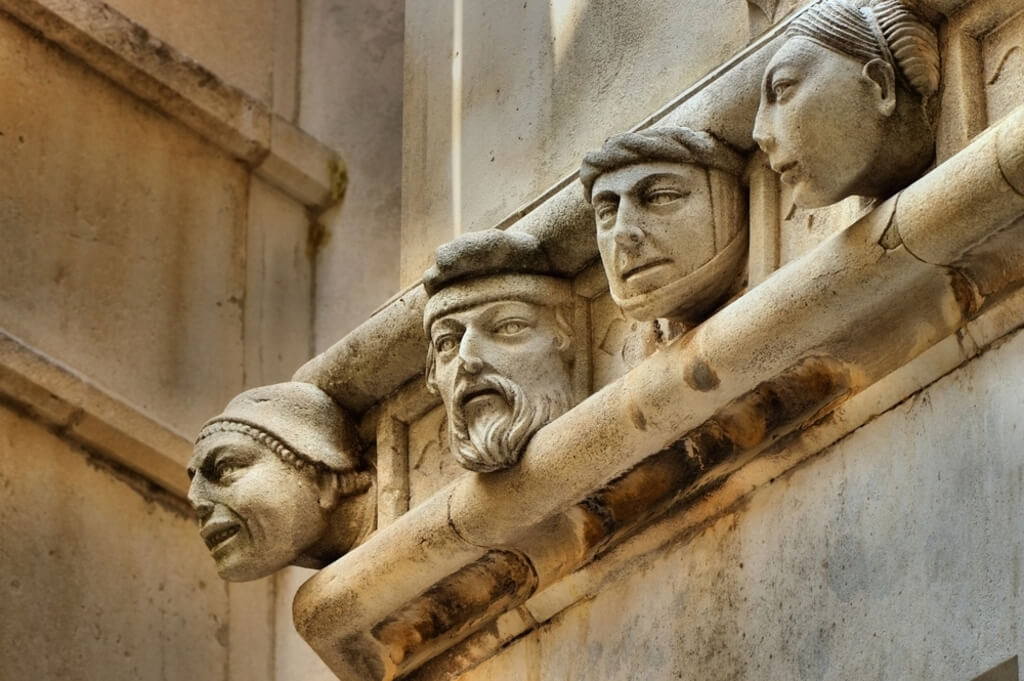
St. Jacob’s Cathedral can be called the symbol of Šibenik. Perhaps the most remarkable aspects of the exterior are the 72, life-sized carved stone heads representing the citizenry of Šibenik during Dalmatinac’s residency (architect Juraj Matvejev Dalmatinac designed the cathedral) – peasants, soldiers, fishermen, etc. The frieze has held up quite well for more than 400 years.
Day 8
After breakfast we start with the walking tour of Split, visiting all the important sights that are both stunning and have a historic and cultural significance for the development of the city and the local Jewish community. In fact, the general tour of Split cannot go without mentioning the role that the Jewish Community played in the cultural and economical development of the city. The tour includes the visit to the 1700-year-old Roman Palace. It hosts in its palm most of the city’s sights like the Basements, beautiful Roman squares and statues, Bell Tower, Jupiter’s temple, former Jewish ghetto and synagogue, City Museum and many more. Throughout the Palace there are plenty of details that could keep you occupied for hours. Within a walking distance there are several Renaissance squares, the City Promenade and a handful of interesting markets. A bit further is the Old Jewish Cemetery, up on the Marjan hill, from where you can see the whole city. It takes about 10-15 minutes to reach it.
Day 9
After a 3 hours ferry ride, we arrive to the Island of Hvar. One of the most beautiful islands in Croatia, and by some accounts in the world (!), is a former lavender capital of Europe. Depending on the time of the year, we can visit lavander fields and learn about lavander oil production, have a safari through its olive orchards, or simply enjoy the breathtaking views of the Adriatic from one of its highest peeks. The Town of Hvar is both a historical and esthetical treasure, certainly not to be missed.
Stay@: HOTEL PODSTINE 4*; SPA HOTEL ADRIANA 4*
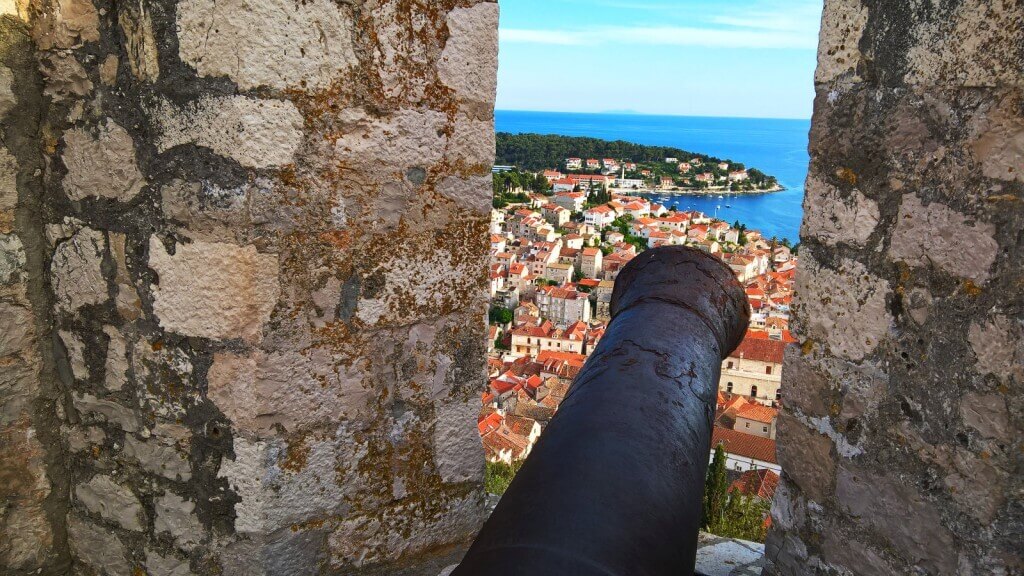
Out of 1300 Croatian islands many consider Hvar to be the most beautiful. The crystal clear blue sea, secluded beaches, rocky hills with vineyards and olive orchards, and above all the famous lavender fields or fancy bars and nightclubs and an occasional celebrity, it’s all part of Hvar’s appeal.
Day 10
We continue our island hopping by sailing to the Island of Korčula, with one of the most unique fortified port towns on Croatian Adriatic. The town of Korčula is also known as the birthplace of Marko Polo but its history and importance strech back for centuries. One of the finest examples of Venetian renaissance, the town also preserves some of the most unique local traditions in the area.
Stay@: BOUTIQUE HOTEL MARCO POLO 4*; HOTEL LIBURNA 4*
Day 11
Driving over the Pelješac penninsula, we’ll stop for winetasting break in one of the best vineyards in the Mediterranian. Continue to the town of Ston, with the longest preserved stone wall in Europe, and some amazing food in a local tavern. In the afternoon, we arrive to Dubrovnik.
Stay@: HILTON IMPERIAL DUBROVNIK 5*; HOTEL EXCELSIOR 5*; HOTEL BELLEVUE 5*
Day 12
Dubrovnik – Jewish merchants from Albania are mentioned in local archives in 1368. After the Spanish expulsion in 1492 Dubrovnik became an important transit center for refugees traveling to Balkan cities under Turkish rule. Jews were allowed to settle in Dubrovnik and were given customs privileges to encourage transit trade. Jews dealt mainly in textiles, silk, wool, leather, and spices. They were allowed to live inside the walls in 1538, but in 1546 a ghetto was established in a small street (still called the Jewish street) enclosed by walls, and the gate was locked at night. Visit the museum, in the second oldest Sephardic synagogue in Europe showing the synagogue artifacts and other items belonging to the past. The well-preserved cemetery contains 200 old gravestones, including that of Rabbi Jacob Pardo, who died there in 1819. Sunset walk along the monumental city Walls are a perfect prelude to evening stroll along Stradun – the main merchant’s street.
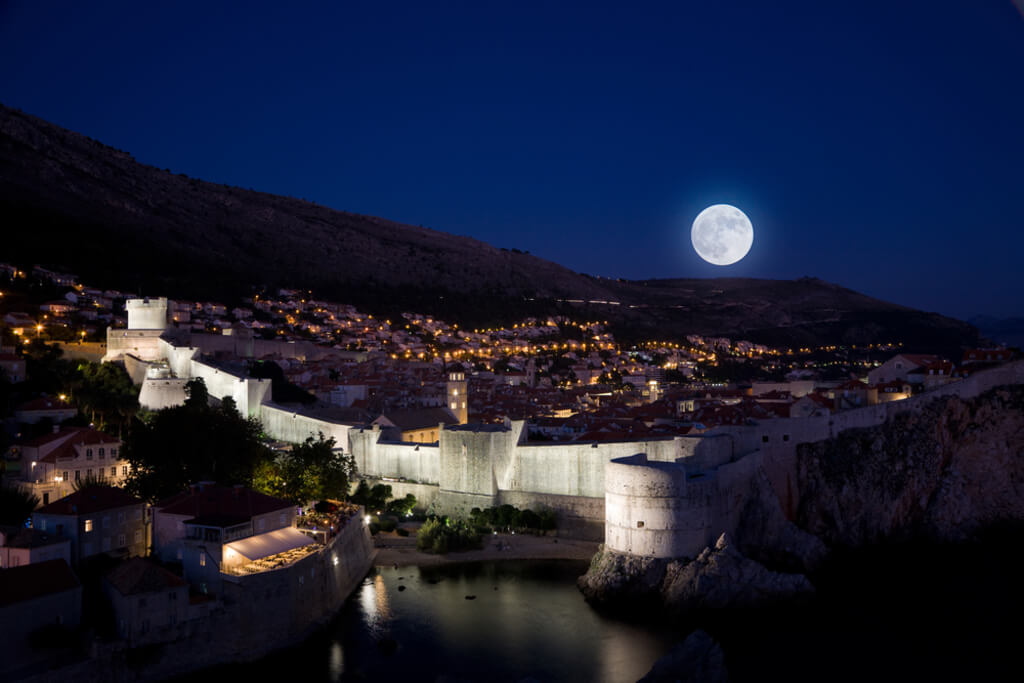
Full moon rising over the old city of Dubrovnik
Day 13
A day trip to Montenegro takes us along the majestic Kotor bay, towards the old traders port of Kotor, hidden beneath the steep Montenegrin mountain slopes that gave the country its name. A one time rival to Dubrovnik and Venice, Kotor has changed many rulers and owners, and a different defensive structures are still towering over the city. The bravest among us will climb the few hundreds stairs to get to the top of the city walls, with a view that fully justifies the effort.
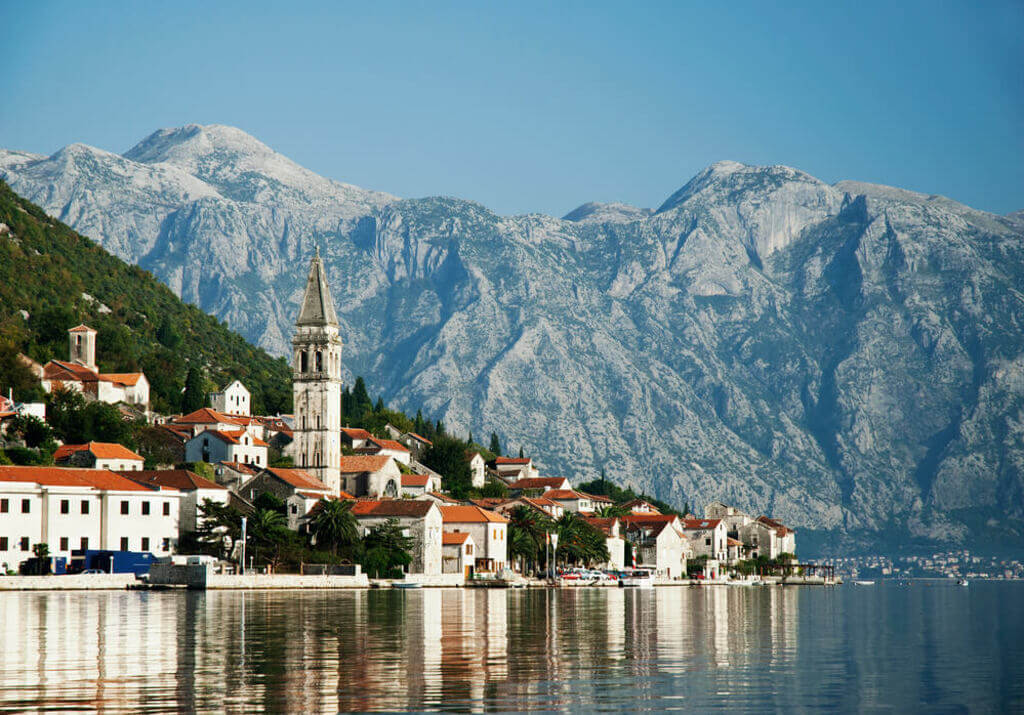
Kotor, remarkable city on a beautiful bay (Montenegro)
